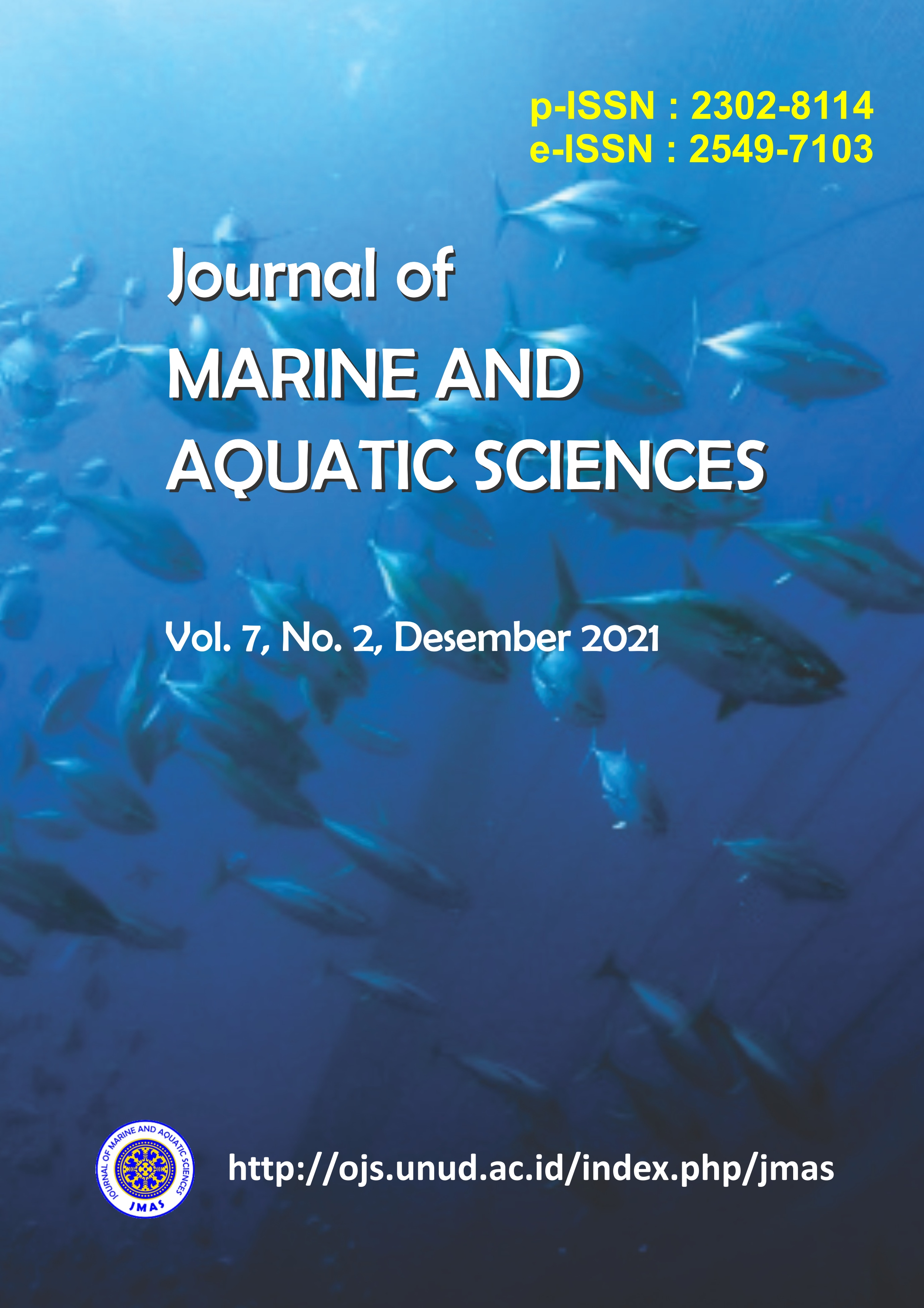Epifauna Pada Ekosistem Lamun Di Kawasan Pantai Sumberkima dan Pantai Karang Sewu, Bali
Abstract
The seagrass field in the Sumberkima and Karang Sewu Beach are two of the habitats that support epifauna life. Epifaunas benefit the seagrass field by using it as a habitat, food supply source, and shelter from predators. This research aim to understand the epifauna density in the seagrass ecosystem, its correlation with seagrass density, and their condition in the Sumberkima and Karang Sewu Beach. This research was conducted in January – March 2020, which used the purposive randomize sampling method. Results show that Karang Sewu Beach only has the seagrass Enhalus acoroides, while three species, Enhalus acoroides, Thalassia hemprichii dan Cymodocea rotundata where found in Sumberkima Beach. Epifauna density in Sumberkima range between 933.33 ind/m3 – 2400.00 ind/m3. Meanwhile, epifauna density in Karang Sewu range between 1311.11 ind/m3 – 2544.44 ind/m3. The epifauna that is mostly encountered is Smaragdia rangiana. Correlation analysis result using the Pearson Product Moment shows a positive correlation between epifauna and seagrass density, r = 0.55, which means that there is enough relation between both variables. The epifauna community has a variety value of 1.60 – 2.19 in Sumberkima, and 1.26 – 2.14 in Karang Sewu, which both count as moderate. The uniformity values 0.74 – 0.96 in Sumberkima and 0.65 – 0.85 in Karang Sewu, which both count as high. Dominance value range from 0.14 – 0.28 in Sumberkima and 0.17 – 0.42 in Karang Sewu, which count as low. Overall, the epifauna community is classified as moderate, where if there is a change in the environment, the community will quickly change too.
Downloads

This work is licensed under a Creative Commons Attribution 3.0 International License.
Copyright 2012 - 2023 Journal of Marine and Aquatic Sciences (JMAS)
Published by Fakultas Kelautan dan Perikanan Universitas Udayana, Denpasar, Bali, Indonesia
JMAS (p-ISSN 2302-8114; e-ISSN 2549-7103)


